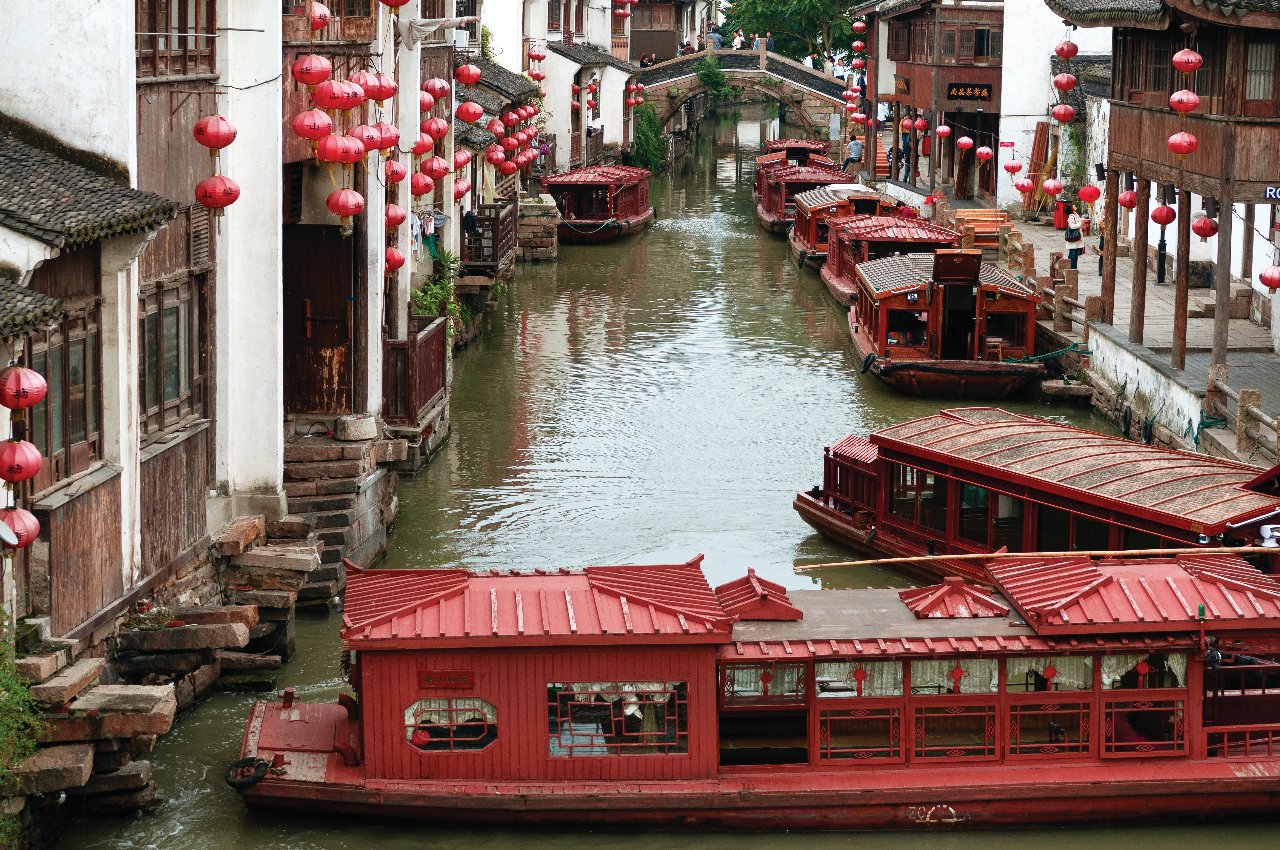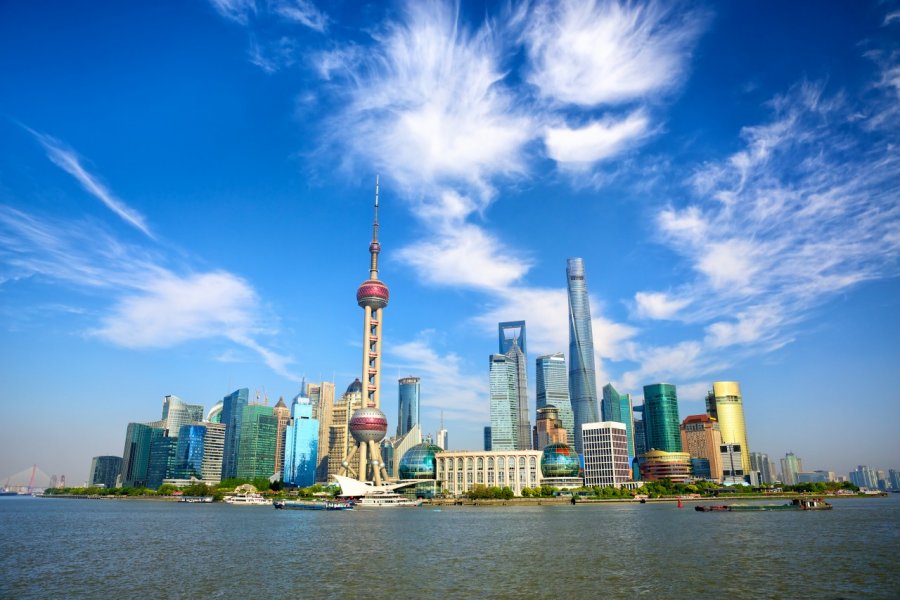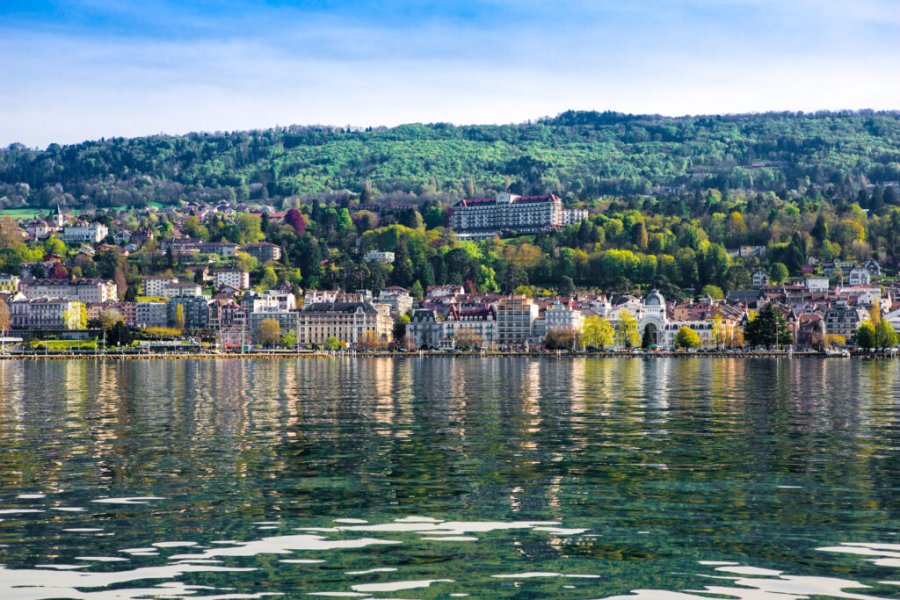Shanghai and its surrounding areas for a long week
Highlights of the trip
During your stay you can enjoy the following highlights: Culture / Heritage.
Best times to go
The best time(s) to go is/are : Printemps, Eté, Automne.
Where to stay in : Suzhou ?
The map of your stay "Shanghai and its surrounding areas for a long week"
Detail of the stay : Shanghai and its surrounding areas for a long week
How to get there
The Bund, the heart of Shanghai

Steps: Shanghai
If the contrast between past and future is found throughout the city, the best place to judge the wide architectural gap in Shanghai is the Bund. An unmissable promenade, surrounded by elegant colonial-style buildings, the Bund is facing the modernism of the business district, Pudong, across the river. According to a local proverb: "All the roads in Shanghai lead to the Bund. " Every day, thousands of foreign and local tourists pace up and down the promenade and enjoy one of Shanghai's most beautiful views. Go up the Bund from south to north, starting at the crossing of Guangdong Lu and Zhongshan Dong Yi Lu. From there, it's possible to board a boat for an excursion on Huang Pu. From your boat, you will have a more global view of the river front. On the Bund, the old buildings deserve as much attention as the futuristic towers of Pudong. Some were built at the turn of the 20th century, often with Italian marble finishes. You can enter some of these princely houses, which have been or are being renovated. Embassies, chic restaurants and clubs that have made it their home. Come back in the evening, Pudong lights up over one kilometre from the shore. The night panorama is worth looking at around a drink or dinner. The Bund is also very picturesque at sunrise, when the Shanghainese come and make their tai-chi.
The visit continues through Nanjing Street (Nanjing Dong Lu) which points away from the Bund at the level of the mythical Peace Hotel. Welcome to the shopping paradise: hundreds of shops of all kinds align with this one-kilometre-long pedestrian stretch, which attracts some 800,000 Chinese and foreign visitors every day. You can find the city's oldest stores at the Nanjing Street. Veterans include Laofengxiang jewellery, founded in 1852 and selling gold, diamonds, jade jewellery and Leiyunshang and Cai Tong pharmacy, active since 1861. Nanjing Dong Lu ends at People's Square (Renming Guangchang), the former racetrack and the heart of Shanghai. Green spaces are concentrated here, important administrative offices and a large number of tourist destinations, such as the Urban Planning Museumand especially Shanghai Museum (Shanghai Bowuguan). The Shanghai Museum is a highlight of Chinese culture and has no serious competitor but the museums of Beijing and Taipei. It is possible to continue your journey through the park to finally run into Shanghai Art Museum, which regularly changes its exhibitions. Follow Nanjing Xi Lu towards the Bund. You will discover the famous Park Hotel, built in 1933 and which has remained the highest skyscraper in Shanghai.
Places of interest : MUSÉE D'URBANISME DE SHANGHAI MUSÉE DE SHANGHAI
Old Town and the former concessions, the history of Shanghai

Steps: Shanghai
If you don't have a lot of time in Shanghai, make it a priority to visit Old Town and the former French concession. It's the Shanghai of narrow streets, where you get from surprise to surprise, witness to a multitude of life scenes.
The visit of Old Town (Nan Shi) will take place in the morning. If you come from Renmin Lu, Old Town will show you a face that is not really its. The constructions, renovation after renovation, have lost their authenticity and become nothing but mere replicas of the past. In the north of Old Town, the main interest is in the visit of Yuyuan. In the 16th century, the governor of Sichuan, Pan Yunduan, had this "garden of joy" (Yuyuan) built. And like in the city of Suzhou, renowned for its fantastic "jardins de lettrés", you will find all elements of a harmonious landscape in Chinese style: bonsai, rocks with fantastic shapes evoking mountains, ponds reminiscent of lakes and seas...
In front of Yuyuan, you can find Chenghuang Miao, the temple of the god of the city. This one, built in 1403, is the residence of Huo Guang, a local general who became, "God of Shanghai". It is particularly visited on the first and fifteenth days of lunar months, when the moon is full or black. A large stone where the faithful come to pray and burn incense has pride of place in the centre of the courtyard. On the roof of the temple, two sculpted dragons offer their protection to visitors. Unlike Western mythology, the Chinese dragon does not spit fire but water, thus putting out the fire that so often threatened the wooden foundations of the city and the temple.
After leaving the Chenhuang temple, turn right towards Fangbang Zhong Lu, better known as "Old Street of Shanghai". You can find there all "chinoiseries" that you can imagine: true false antiquities, Little Red Book, tea, posters that take up again the propaganda of the Maoist era, beautiful lacquered boxes, lighters and card games bearing the effigy of Mao, old cameras...
When leaving Fangbang Lu, going away from Yuyuan, you leave behind you the restored part of the old town. The streets become narrower, the facades of the houses are a little dilapidated, the interior of the courtyards suggests bikes, clothes that dry and at the bend of a passage, you will run into a band of old Chinese men very focused on their mahjong game ... As a whole, the old town survived the profound changes of Shanghai, and strolling there is a real trip back in time.
The afternoon can be dedicated to a walk to the French concession. With the Xintiandi neighbourhood as a starting point, go and visit the site of the first congress of the Chinese Communist Party, in Huang Pi Lu. Then take the Xingya Lu towards Fuxing Park. Stroll through this very active former "French Park", which has not, as it were, changed. Cross the park and you will arrive at the intersection between Sinan Lu and Xiangshan Lu, at the residence of Sun Yat-sen, the father of "Modern China". The former French concession houses other historic residences, such as that of Zhou Enlai or Song Qingling, the wife of Sun Yat-sen. These houses give a history lesson and an opportunity to discover the interior architecture of these very beautiful French concession houses.
You can then go back to Huaihai Zhong Lu and turn left: you have before you the Champs-Elysées of Shanghai, with its prestigious brands. Go down the avenue to Shanxi Nan Lu, then go up north. With its streets lined with plane streets, its old European-style houses nestled in the heart of sumptuous gardens and shops frequented by the fashionable Shanghainese, this part of the neighbourhood is alive and nice to visit. Only a few steps away are the former working-class districts, true "red suburbs", small brick buildings that seem to come straight out of the 19th-century France. In a country where bulldozer is king, the preservation of entire neighbourhoods is a miracle. And to stay in the atmosphere of the 1930's, you can end the evening with a glass at Ruijin Park.Places of interest : RÉSIDENCE DE SUN YAT-SEN PARC FUXING TEMPLE DU DIEU PROTECTEUR DE LA VILLE
Pudong, the future of Shanghai

Steps: Shanghai
After this visit of the historic Shanghai, cross the Huang Pu River and immerse yourself in a completely different universe. Out of the ground in just twenty years, Pudong became the area of all records, the pride of the entire nation.
The Oriental Pearl Tower, the Shanghai emblem with its kaleidoscopic pearls, is the third highest television tower in the world. To enjoy a view of Shanghai, you can climb to the top. Take the opportunity to visit the Shanghai History Museum, located at the foot of the tower. This is probably the best place to have a good overview of Shanghai's evolution through the ages. The period of concessions is particularly well documented. In front of the museum, you can also visit the Ocean Aquarium in Shanghai. Over 350 species, from five continents, are represented. The long underwater tunnel of 155 meter, divided into several sections, is impressive. The most spectacular section remains that of the sharks... Then, go up the Century Avenue towards the Jinmao tower. On the 88th floor, Grand Hyatt's Cloud 9 sails above the clouds. This lounge bar offers a different view of the city, and above all an impressive peak on the inside of the tower itself. For those who are not yet a victim of vertigo, you can continue your visit to the heights of Shanghai by climbing into the Shanghai World Financial Centre tower or in the newly completed . The latter, shaped like a bottle opener, does not go unnoticed. A little green break in the park of the Century, and you will return to Puxi by taking the the summit of the shanghaien kitsch. To change a bit of atmosphere, you can spend the evening in a show of acrobatics at the Shanghai circus.
Places of interest : MUSÉE D'HISTOIRE DE SHANGHAI - SHANGHAISHI LISHI BOWUGUAN TOUR JINMAO SHANGHAI WORLD FINANCIAL TOWER SHANGHAI TOWER
Getaway in Suzhou

Steps: Suzhou
After three days of shanghaien marathon, prepare a short trip to Suzhou for a breath of fresh air and tranquility. If you choose to visit the city in a day, it is better to leave early in the morning. The trip can be done by bus or train, but prefer the train. Setting up an express line has reduced the journey time considerably and it takes only 40 minutes to connect Shanghai to Suzhou. Once there, don't miss to visit the fantastic gardens that make Suzhou famous ( , , the ), to get lost in the small streets of the city centre and why not, embark on a boat to finally discover the Venice of the Orient which fascinated so much Marco Polo.
Return to Shanghai early in the evening, for a dinner in a quiet garden of the French concession. A good way to cut off a little with the frenetic rhythm of Shanghai.
Places of interest : JARDIN DE L'HUMBLE ADMINISTRATEUR JARDIN DE LA FLANERIE JARDIN DU MAÎTRE DES FILETS
The Temples, the soul of Shanghai

Steps: Shanghai
The city is not really considered religious, but history has left traces that deserve to be explored if we are interested in the issue. We can therefore visit the various Buddhist temples of the city, but also the beautiful the old Chinese city, and the Taoist temple of Baiyun. Another historical page may then be travelled: that of the Jews of Shanghai. As refugees in the city at the beginning of the Second World War, Jews were grouped together in a neighbourhood that still bears their mark, as tenuous as it is today: residential neighbourhoods, synagogues and Jewish cemetery can be discovered in the city.
Places of interest : TEMPLE DE CONFUCIUS
South of Shanghai, land of contrasts

Steps: Shanghai
The south of Shanghai is not the favourite destination of tourists, but if you have some time on the spot, a small expedition in the south can be justified. In Xujiahui district, you will be able to visit the pagoda and , and then follow the tomb of Song Qingling. Further south, you can spend a quiet afternoon in the in Shanghai.
And if you're looking for a contrast, the day can end with a few descents into the covered ski slope of Yinqixing. The pleasure of sliding is not necessarily guaranteed on this small track above all designed for initiation, but a few descents on the snow while it is in the middle of summer definitely leave a lasting memory.
Places of interest : TEMPLE DE LONGHUA JARDINS BOTANIQUES
Getaway in Hangzhou

Steps: Hangzhou
In the vicinity of Shanghai, another destination deserves a detour. , with its , is very beautiful. The ancient capital of the Song of the South, which has always been celebrated for its beauty, has a rich architectural heritage. Rent a pedal boat or a small motor boat to enjoy the freshness of the lake, visit the Leifang Pagoda, and then go on with a small hike in the tea field of the surrounding countryside.
As for Suzhou, think about leaving early if you want to visit the city in a day.
Places of interest : LAC DE L'OUEST
Shanghai under the sign of art
Steps: Shanghai
Return to Shanghai. Discovery of the north of the city and Suzhou Creek area. In the morning, the is worth visited, to listen to revolutionary choirs or to watch the Chinese dancing and practicing Tai-chi. We will continue with a walk in Duolun Jie, a lovely pedestrian street of the Japanese concession, where you can sit on the terrace to drink coffee before visiting the small . The day will continue in the Moganshan district, where artists' workshops and many of the city's contemporary art galleries are located. To close this artistic day, you can choose to dine in a Thai restaurant and painting gallery at the same time, and then take a drink in one of the many jazz clubs in the city.
Places of interest : PARC LU XUN MUSÉE D'ART CONTEMPORAIN DE SHANGHAI











